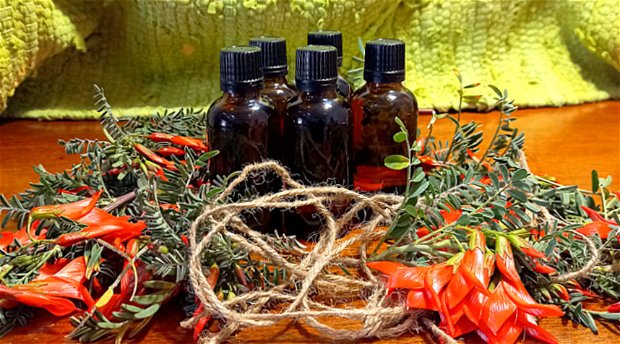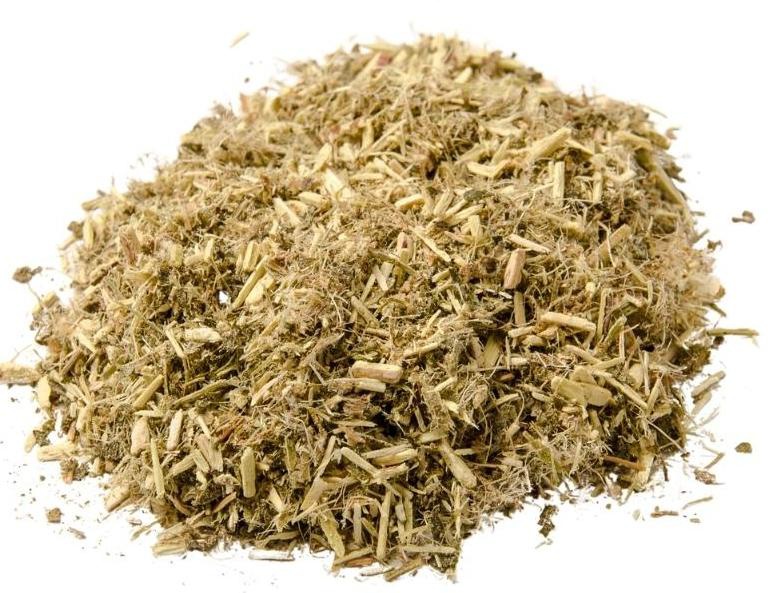Medicinal Healing Plants of Spitskop - Sutherlandia Frutescens /Lerumo La Madi

We Walk Lightly on the Earth
The plant has more than 25 recorded names - Many of its names refer to the important medicinal use, such as kankerbos (cancer bush; Afrikaans), insiswa (dispels darkness; Zulu), phetola (to change; Tswana), and lerumo lamadi (spear of the blood; North Sotho).

Sutherlandia frutescens - Lessertia frutescens is an indigenous medicinal plant extensively used in South Africa to treat a variety of health conditions. It is a fairly widespread, drought-resistant plant that grows in the Western, Eastern, and Northern Cape provinces and some areas of KwaZulu-Natal, Eastern Free State - varying in its chemical and genetic makeup across these geographic area.
When we first arrived at Spitskop 21 years ago we walked the fields and koppies to try to find just one remaining Sutherlandia Frutescens plant - where they once grow robustly - only to find overgrazing and harvesting had all but brought this magical healing plant to extinction in this area.
We hunted and found one small plant at an indigenous nursery in Hekpoort- a long drive - and we planted this exquisite healer in front of Mongoose Cottage - where it has proliferated and is magnificent in the winter when there is little else, and the plants are covered daily in buzzing happy bees.
Wind and wild seeding has spread the plant which is now popping up all over the estate - and we have handed out thousands of seeds to local farmers and gardeners - those visiting Amohela - as this is such a beautiful healer and literally from small mice to dassies - antelope - insects - feed on it.
We can now wild harvest and forage and make beautiful soothing infused oils - steamed for some 3 hours in organic olive oil - bottled and left for 2/3 weeks, when it is again stained and comes up magnificently clear and ready for use.

This gentle soothing healing oil is absolutely lovely to use - 5 drops on face and neck at night - arms and hands - legs and feet. It is not oily- sinks into skin and one can only be amazed at the softness and improvement n skin quality after just one month. Fantastic for light skin cancers - inflammation - and eases out wrinkles

Dried Sutherlandia for use as decoction or tea - or steep and use water in the bath for aching muscles, arthritis, inflammation.
Sold in glass bottles - POA
Small Bottles of seeds - some 50 seeds per bottle - POA

Ecologically legumes are well known for fixing nitrogen in the soil through a symbiotic relationship with bacteria. The bacteria infect the roots, forming small growths or nodules. Inside the nodules, atmospheric nitrogen, which the plants cannot use, is converted to ammonia, which plants can use. The plant supplies sugars for the bacteria, while the bacteria provide the biologically useful nitrogen that the plant absorbs.
- The Meeting of Science and Traditional Knowledge
The Traditional Uses of Sutherlandia
In South Africa, Sutherlandia is used by an array of healers, such as herbalists (inyanga) ), diviners (isangoma), bush doctors (bossiedokters), Rastafarians, alternative and allopathic medicine practitioners, and lay people. Sutherlandia frutescens has long been used as a garden plant for flower arrangements, but this bitter-tasting plant is best known for its medicinal values. First records about its use came from Dutch colonists in the Cape, who probably came to know it through interaction with the local San and Khoi. The original inhabitants of the Cape, the Khoi San and Nama people, used decoctions made from Sutherlandia to wash wounds and to bring down fevers. Not surprisingly, S. frutescens is today still one of the most commonly used medicinal plants in the Western Cape. It is also sold in muthi (medicine) markets and in amayeza (medicine) shops in other parts of the country.
Preparation and Use
The aerial parts of the plant (stems, leaves, flowers, and pods), the roots, or only the leaves are usually used to make the infusions and decoctions. A decoction of Sutherlandia is used to wash wounds and the eyes and to reduce fevers, and the infusions from the leaves and stems are used to treat cancers, fever, diabetes, kidney and liver problems, rheumatism, and stomach ailments. The plant is also used for a diversity of symptoms and conditions, such as depression and stress; as a tonic; to purify the blood and wounds; to treat skin conditions and inflammation; to enhance appetite and prevent wasting; as an emetic; and to treat influenza, hemorrhoids, urinary tract infections, back pain, and gonorrhea.
Traditional healers prepare the decoctions according to the type of disease indicated by the patient. Their preparation ranges from using the leaves, flowers, stems, and roots for different ailments. The traditional healers collect fresh plant materials, dry them, and then stamp or mash them into powder between two stones. The preparation is then usually infused in hot or boiling water, left to cool, and given to the sick person.
Currently, Sutherlandia is available in various dosage forms, such as capsules and tablets (containing Sutherlandia raw material in powdered form), gels for topical application, creams, liquid extracts, and ointments and is found in pharmacies and herbal shops. Commercial Sutherlandia tablets gained popularity as an herbal product for the treatment of muscle-wasting effects in patients with HIV/AIDS because of marked improvement in quality of life
- To meet the demand for this important medicinal plant, several commercial farms exist in South Africa.
Sutherlandia HIV/AIDS Clinical Trials: the Meeting of Science and Traditional Knowledge
The popularity of herbal medicines has led to increasing concerns over their safety, quality, and efficacy. To this end, clinical trials have been conducted worldwide to ascertain the safety and efficacy of these herbal products using human participants. With regard to S. frutescens, several caregivers, such as Anne Hutchings, have treated HIV patients with Sutherlandia and other herbs weekly at Ngwelezana Hospital's AIDS clinic in northern KwaZulu-Natal. She observed that when taken with a proper diet, Sutherlandia improves quality of life and might be significant in delaying the need for antiretroviral therapy.
Conclusion
S. frutescens is increasingly understood and studied as a phytomedicine that can potentially be used for people who are HIV positive but who do not yet qualify for antiretroviral treatment (i.e., to fill the treatment gap). This can happen only if the clinical trials show that Sutherlandia is safe, is of good quality, and demonstrates efficacy. At the same time, greater collaboration between traditional health practitioners and scientists enhances insights into the use, preparation, therapeutic possibilities, and pharmaceutical make-up of this plant medicine. In this way, traditional knowledge and science intersect in new and original ways.



Share This Post